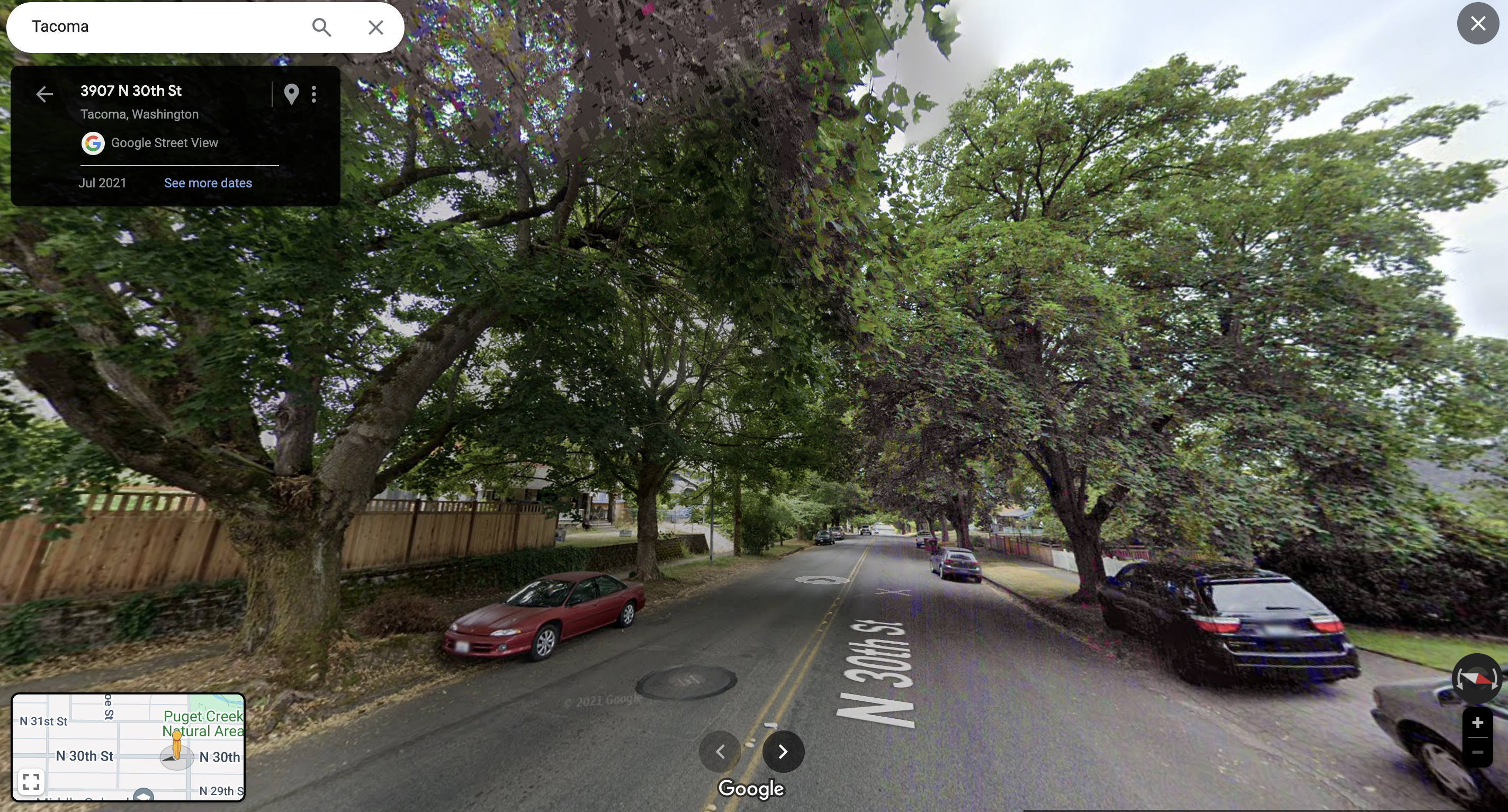To understand this article, it will help if you have a baseline understanding of Washington eviction law, so consider checking out our guide to evicting a tenant in Washington.
The “Landlord Fairness Code” is poorly written and difficult to implement
Tacoma’s Landlord Fairness Code was notoriously voted into law via Tacoma ballot initiative no. 1 in November, 2023. Elsewhere, we’ve broken news (?) on how the Landlord Fairness Code was voted into law due to a darkly hilarious procedural error by the Tacoma City Council. Essentially, the city council attempted to draft an alternative ballot measure, but foolishly voted the alternative measure into law instead on July 11, 2023.
As a result, both the city council’s alternative and the Landlord Fairness Code are law now. Landlords must comply with both. We’ve written another article about the council’s July 2023 rental housing code updates that Tacoma landlords should also read to better understand their duties.
In this article, we explain in detail what the landlord-fairness code means for Tacoma landlords (and tenants to). Spoiler alert: this law is riddled with unintended consequences. In some ways, it doesn’t protect tenants as much as it’s supposed to. In other ways, the new law goes overboard and protects certain tenants so much that landlords aren’t going to want to rent to them at all.
Analyzing the “Landlord Fairness Code” in detail
Below, we go through the “Landlord Fairness Code” with a fine-tooth comb below. Where applicable, we’ve provided some creative workaround ideas. Will these workarounds hold up in court? We think so, but only time will tell.
Notice to increase rent
Rental increases now require two notices. The first notice must be issued 210-180 days before the increase notice takes effect. The second notice must be issued 120-90 days before the rent increase takes effect. As always, notices should correspond with the end of the lease term or, for month-to-month tenancies, the end of the month.
Rental relocation assistance
If a landlord issues a notice of a “rent increase of 5% or more, the tenant may request relocation assistance” equivalent to two months of rent. The larger the increase, the worse it gets: “[I]f the notified rent increase is over 7.5%, the relocation assistance shall be equal to two and a half months of rent, and if the notified rent increase is over 10%, the relocation assistance shall be equal to three months of rent.”
Within 30 days of receiving a request for rental relocation assistance, landlords must pay the relocation assistance to the tenant. Importantly, it doesn’t matter if the tenant can relocate for less money than the relocation assistance amount. If, for example, the rent is $2,000 per month and the increase is 10%, then the landlord would still need to pay the tenant $6,000 even if the tenant can actually relocate for $500. In this instance, the tenants would get a windfall of $5,500!
It’s also important to note that the landlord has no guarantee the tenant will actually vacate when they pay out rental assistance. So, and landlord could pay out $3,000+ to the tenant to pay for their relocation and then still need to drag the tenant through a $5,000, three month eviction. If the tenant fails to timely vacate the unit, they’re supposed to refund the relocation assistance, but the landlord is unlikely to ever actually recover it. We go into more detail in our companion article, Anatomy of a Nightmare Tenancy in Tacoma.
Creative workaround for rent relocation assistance
Fortunately, the relocation assistance requirement should not be triggered by issuing a series of less than 5% rent increase notices. If, for example, the landlord issues a 4.9% rent increase notice in January to be effective July 1, they could issue a second 4.9% increase notice in February to be effective August 1 (and so on). This would constitute a total increase of 9.8%+, but no single notice would exceed the 5% threshold, so the rental relocation assistance requirement should not be triggered.
The drafters of the Landlord Fairness Code could have prevented this workaround by adding a time period for the rent increases. For example, they could have written the following: “Landlords shall be liable to the tenant for rental relocation assistance whenever the landlord increases rent by 5% or more within any 12-month period.” However, the drafters instead wrote: “At any time after receiving the 180-day notice of a rent increase of 5% or more, a tenant deciding to relocate rather than paying the rent increase may send the landlord a request for relocation assistance.” Therefore, so long as no individual increase notice exceeds 5%, no relocation assistance payment should be required.
Take this workaround with a grain of salt. We think this is a solid interpretation, but it’s ultimately up to the courts to decide, and the courts tend to be very pro-tenant.
Pet deposits
Pet deposits cannot exceed 25% of the first month’s rent and must be refundable to the extent of pet damage.
Move-in fees
The total for all move-in fees “cannot exceed the first month’s rent.” The term “move-in fees” includes everything other than pet fees. So, landlords can no longer charge the traditional background check charges, plus last month’s rent, plus a security deposit.
Fundamentally, landlords need a certain amount of collateral or security to hand over possession of a valuable property to a tenant. Obtaining last month’s rent and a healthy security deposit are the historical ways that landlords have achieved this collateral. The Landlord Fairness Code makes this traditional structure illegal.
Creative workaround for move-in fees
Fortunately, there’s no law requiring that the first month’s rent is the same amount as all subsequent months. Nothing prohibits landlords from charging a larger first month’s rent to obtain a similar amount of security as was once provided by traditional fees.
For example, let’s say market rate rent for a unit is $2,000/mo and the landlord is accustomed to charging an additional $3,600 in fees for security (e.g., $2,000 for last month’s rent, $1,500 security deposit, $100 in processing fees). Under the new law, $1,600 of that amount would be prohibited as fees. However, if the landlord increases the first (and only the first) month’s rent, then the landlord could charge more in fees. If, for example, the landlord increased the first month’s rent to $2,800, the fee cap would be $2,800 and the additional rent would be $800, totaling $3,600—the same amount of financial security that the landlord is accustomed to.
There are a lot of other ways to structure this. Instead of charging any fees at the outset, the landlord could instead charge three- or fourt-times market rent for the first month only. This workaround equally applies to pet deposits below
Cold weather eviction ban
Landlords are prohibited from evicting tenants from November 1-April 1 unless the following applies:
- The landlord or their immediate family wish to occupy the unit and no substantially equivalent unit is vacant and available to house the owner or his or her immediate family in the same building;
- The unit is condemned or uninhabitable;
- The landlord is a roommate of the tenant being evicted;
- The tenant has engaged in sexual harassment;
- The tenant fails to comply with a three day or ten day notice to vacate for a drug-related activity nuisance pursuant to chapter RCW 7.43;
- The tenant permits waste, nuisance, or unlawful business on the premises pursuant to RCW 59.12.030(5); or
- The tenant’s conduct has a substantial detrimental impact on, or constitutes an imminent threat to, the health or safety of other tenants in the rental building or the owner.
Thus, in most circumstances, tenants are immune from eviction for five months every year (~151 days). At Tacoma’s average rental rate of $1,650, landlords could lose $8,250 or more per year.
Creative workarounds for the cold weather eviction ban
The simplest workaround is for a landlord to issue a notice that they intend to occupy the unit. However, these notices should not be issued lightly since RCW 59.12.030(5) provides the tenant with a possible right of redemption if the landlord fails to occupy.
Beyond that, we have a couple other ideas. Obviously, the main risk we need to mitigate is that a tenant will stop paying on November 1 and the landlord won’t be able to get them out till after April 1, at which point the tenant will have stayed for free for five months.
One way to mitigate this risk would be to charge a larger rent from April -October and then no rent from November 1-April 1. For example, if the market rent for a unit is $2,000/mo, that’s $24,000/year. A landlord could charge $3,200 from April -October and then nothing from November 1-April 1, which would still provide them with $24,000/year while limiting the risk of nonpayment from November 1-April 1. Unfortunately, we imagine explaining this to potential tenants could be difficult.
Another way to mitigate the risk of nonpayment is to obtain actual collateral in the form of a lien or deed of trust. For example, if the tenant owns their car, a landlord may be able to collateralize their lease obligation with a lien on the tenant’s car. If the tenant has a family member with home equity, the landlord could guarantee the lease by placing a lien or deed of trust on their home to collateralize rent payment. Again, this is a clunky and unusual way to guarantee payment.
School year eviction ban: Landlords are prohibited from evicting tenant during the school year when doing so would require the tenant to vacate their dwelling unit during the school year and the tenant or any resident of the dwelling unit is:
- A child or student;
- A person having legal custody of a child or student, including but not limited to the child’s or student’s parent, stepparent, adoptive parent, guardian, foster parent, or custodian; or
- An educator
This begs some definitional questions. What constitutes a “school,” the “school year,”“child or student,” and “educator”?
“School” means any child care, early childhood education and assistance program, or head start facility, and any public, private, or parochial institution that provides educational instruction in any or all of the grades and age groups up to and including twelfth grade, except this grade limitation shall not apply to special education students where the education plan extends beyond the twelfth grade. So, this definition probably includes preschool and maybe even daycare. However, it doesn’t include colleges, universities, or trade schools (thank goodness).
“School year” means the period from (and including) the first day of the academic year to the last day of the academic year, as set by Tacoma Public Schools, or its successor, on its calendar for first through twelfth grade students. If for those grades there are multiple dates for the first day or last day of the academic year, the earliest and latest dates, respectively, shall define the period. In 2023, the “school year” appears to be September 7-June 21 based on the Tacoma School District calendar.
“Child” or “student” means any person either under the age of 18 years or currently enrolled in a school. Notably, the child doesn’t actually need to be enrolled in school to trigger this eviction prohibition.
“Educator” means any person who works at a school as an employee or independent contractor of the school or its governing body, including but not limited to all teachers, substitute teachers, paraprofessionals, substitute paraprofessionals, administrators, administrative staff, counselors, social workers, psychologists, school nurses, speech pathologists, custodians, cafeteria workers, and maintenance workers.
Yes, custodians, maintenance staff, and even independent contractors are considered “educators” under the Landlord Fairness Code (!). What about roofer who mainly works on commercial buildings but occasionally works on schools? What about a teacher who is fired or quits halfway through the school year? There’s a lot of gray area in this definition.
The same exemptions applicable to cold weather evictions also apply to school year evictions.
In sum, the Landlord Fairness Code imposes a 9.6 month eviction ban (~288 days) for tenants with kids under 18 and for all tenants whose work is tangentially related to the school system. At Tacoma’s average rental rate of $1,650, landlords could be in the hole more than $15,860 before they can even start an eviction.
Creative workarounds for the school year eviction ban
All the creative workarounds we listed above under cold weather evictions also apply here.
Additionally, landlords can try to avoid renting to tenants who qualify as “educators.” However, if a tenant becomes an “educator” after they’ve taken possession of the premises, landlords are probably prohibited from evicting them under TMC 1.100.070(7), which expressly prohibits evictions based on a tenant’s status as an educator.
Note that it is illegal to intentionally avoid renting to tenants with children pursuant to RCW 49.60.222.
Late fees
Late fees cannot exceed $10/mo.
Health and safety standards: Landlords cannot commence an eviction if the landlord is in violation of “tenant protection laws” or if the premises is in violation of TMC 2.01.050 (minimum buildings and structures code), or under RCW 59.18.060 (habitability standards).
Enforcement
Landlords who violate the Landlord Fairness Code may be liable for penalties of between $500 and five months of rent.
There is no enforcement provision allowing the City of Tacoma to enforce the Landlord Fairness Code. Therefore, the tenant or tenant organization must sue to enforce.
It wouldn’t often be economically efficient for a tenant to initiate a lawsuit against their landlord. However, if a landlord commences an eviction against a tenant, the tenant may have a statutory right to free legal counsel under RCW 59.18.640. In that case, asserting a counterclaim may be free for the tenant. There are, however, limits to a tenant’s ability to counterclaim in an unlawful detainer lawsuit.
Conclusion
If you’re a Tacoma landlord, these changes are all bad—very bad. If you want to avoid massive potential liability, you’ll need to think very carefully about the tenants you accept and about the way you structure your leases.
For landlords with multifamily buildings looking to jump ship out of the sinking Tacoma rental market, we have a few suggestions: recent zoning law changes may allow you to subdivide your property, and condominium conversion is another option, even for small buildings.
If you’re a current tenant in Tacoma, the news is pretty good. You just gained a lot of security and power in the relationship with your landlord. However, rent increases probably won’t change as much as you might have expected.
Things look less rosy if you’re a prospective tenant looking for a place to rent in Tacoma. Landlords are going to very nervous about trusting you with their unit, so you may be subjected to more invasive background screening or peculiar lease terms. If you have marginal income, children, or are employed at a school or daycare, you may find it more difficult to find a place.
In all, we think these changes are bad for everyone. The socialist who drafted this may have bitten off more than they can chew.



